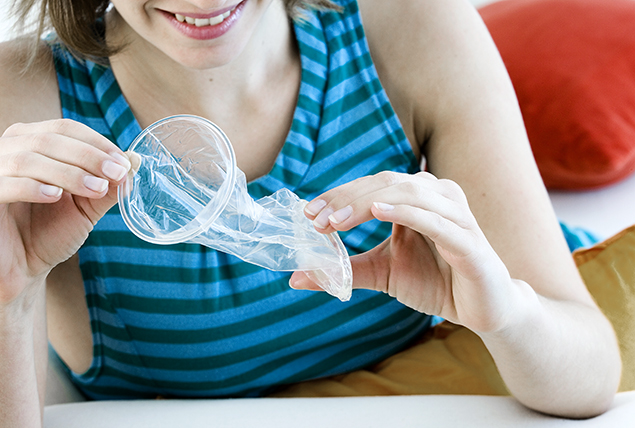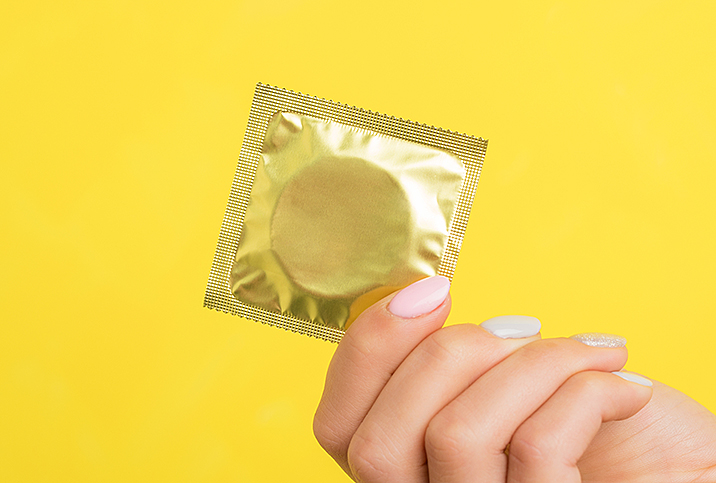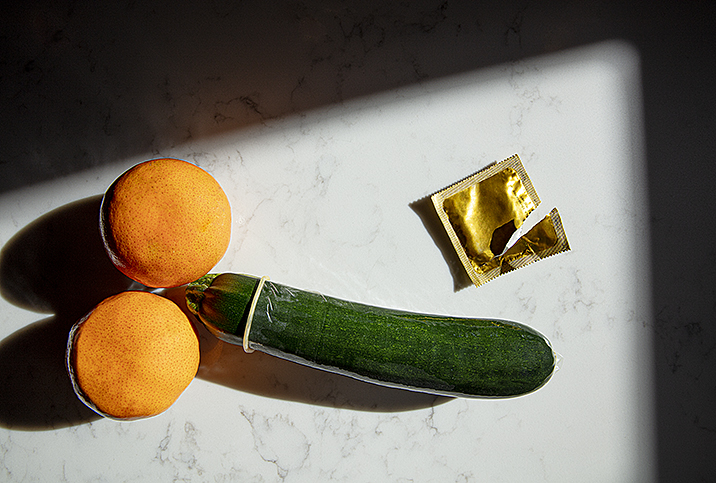Internal Condoms Appear to Be Gaining in Popularity

Internal condoms (gendered as female condoms) are inserted vaginally or anally for barrier protection during sexual penetration. The condoms resemble a pouch with a heavier ring on the closed end and a lighter, wider ring around the opening to prevent admittance to the vagina or rectum.
Since female condoms are typically made of nitrile and not latex, they are often allergy-friendly. It's no surprise that sales of this birth control method are on the rise.
How to properly use internal condoms
All genders may use internal condoms for penetration with a penis, hand or toy. This birth control method can accommodate a penis of any size. Internal condoms are single-use and aren't to be used with an external condom.
When used correctly, internal condoms are 95 percent effective at preventing pregnancy and can help reduce the rate of sexually transmitted infections (STIs). However, nobody's perfect, and the effectiveness rate with "typical" use is about 79 percent.
"Their efficacy completely depends on the user's knowledge of how to place it correctly," said Amir Marashi, M.D., an OB-GYN and the founder of Ceré, a company in Houston that develops physician-designed pleasure products for women.
Marashi trains patients on how to remove internal condoms correctly to avoid sperm leakage and accidental pregnancy.
"An internal condom is inserted by pinching the ring at the closed bottom and pushing it into the vaginal canal, where it will open and expand," explained Celina Gomes, a sex educator in San Francisco who is certified through Everyone Deserves Sex Education. "Then insert your fingers into the condom opening and push back as far as possible. The wider, lighter ring will be exposed on the outside of the vulva or rectum. Remove it by twisting the outside and carefully pulling it out so the fluids stay inside."
Twisting the ring helps prevent leakage. Throw the used condom into the trash. Don't try to flush a female condom.
Lack of awareness creates a stigma around internal condoms
The U.S. Food and Drug Administration (FDA) has approved only one brand of internal condoms, the FC2 Female Condom. This option deficit may create a barrier to access and a lack of awareness while also potentially enabling stigma.
Internal condoms aren't showcased in the media or in pornography. Many people don't know they're a viable alternative to external condoms. Only a slight majority of state and municipal health department websites bother to provide information about internal condoms.
Gomes said many people with penises find internal condoms increase their pleasure during sex because they don't restrict physical sensation.
"Internal condoms come dressed with lube and space so folks can experience less friction and more comfort. The increased ease of glide can increase pleasure," Gomes said. "Since they're internal, neither partner needs to have an erection for an internal condom to be inserted. It takes some pressure off of the person with a penis to maintain an erection."
Internal condoms empower the wearer
Some people enjoy the autonomy that internal condoms provide. They can be inserted before sexual activity so the wearer can be prepared for safer sex, regardless of whether their partner has protection.
Stealthing, the term for sneakily breaking a condom or taking it off without telling a partner, can be a concern with external condoms.
"I've worked with women who've experienced stealthing, and it's damaged their ability to trust and be vulnerable with sex partners," Gomes said.
Internal condoms could help empower women whose bodily autonomy is under threat due to increased anti-abortion regulations.
Pros and cons to buying internal condoms
Internal condoms can be purchased online or at a pharmacy with a prescription. The condoms have a shelf life of five years, and the cost is usually covered by insurance under the Affordable Care Act (ACA).
People who are uninsured or financially insecure may not be able to obtain internal condoms.
"They have no competition and no need to price their product competitively," Gomes said. "Internal condoms cost more to manufacture than external condoms, and the company that creates them doesn't have the same revenue as the major condom brands to afford production in high volume."
Sales of internal condoms are rising
A recent condom market study by Bedbible, a sex toy reviewer, analyzed market share and the best-performing companies. In 2021, external condoms (gendered as male condoms) dominated sales and accounted for $7.29 billion of the $7.93 billion generated worldwide, the study found.
Yet there's been an uptick in sales of internal condoms, and the study projected that by 2030, internal condoms will generate $1 billion worldwide.
The bottom line
Internal condoms can help provide people with a vagina a way to take their reproductive health into their hands. Since these condoms aren't made of latex and don't include hormones, they could be a great option for anyone who wants allergy-friendly birth control.
Need a doctor? Giddy Telehealth offers an online, accessible portal to hundreds of healthcare professionals. Connect with a doctor to help get your health questions answered, hassle-free.


















